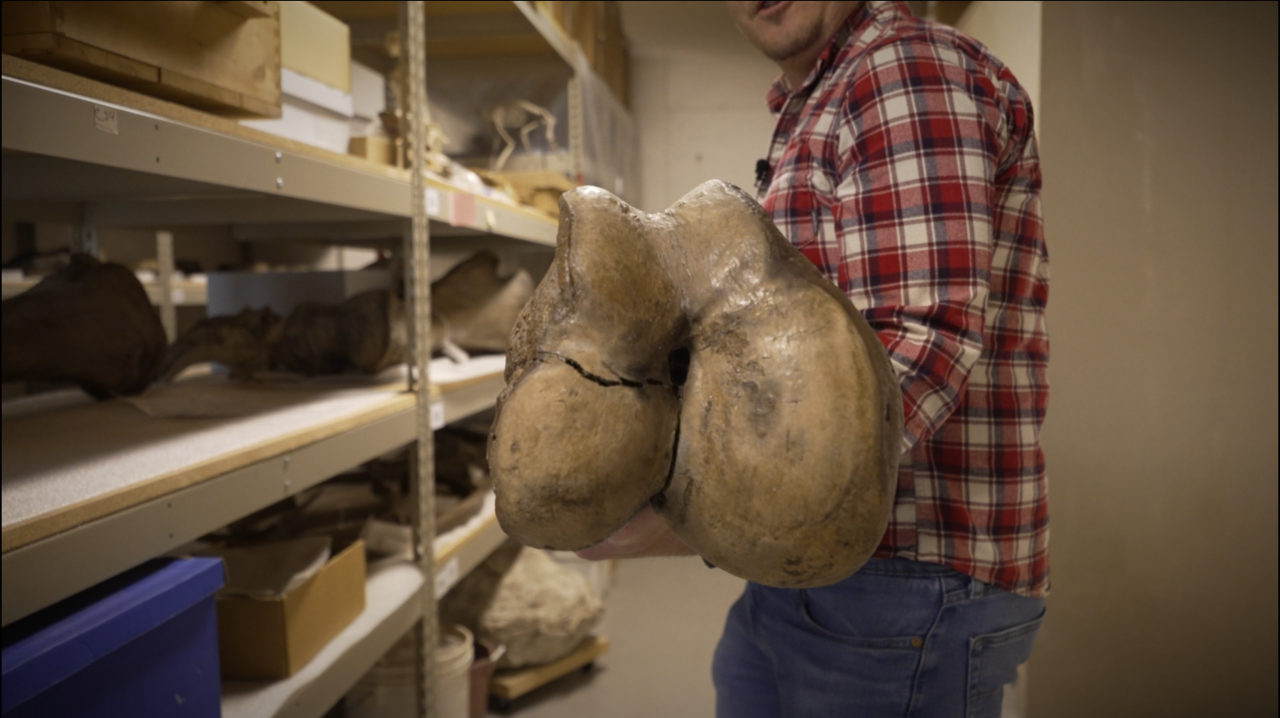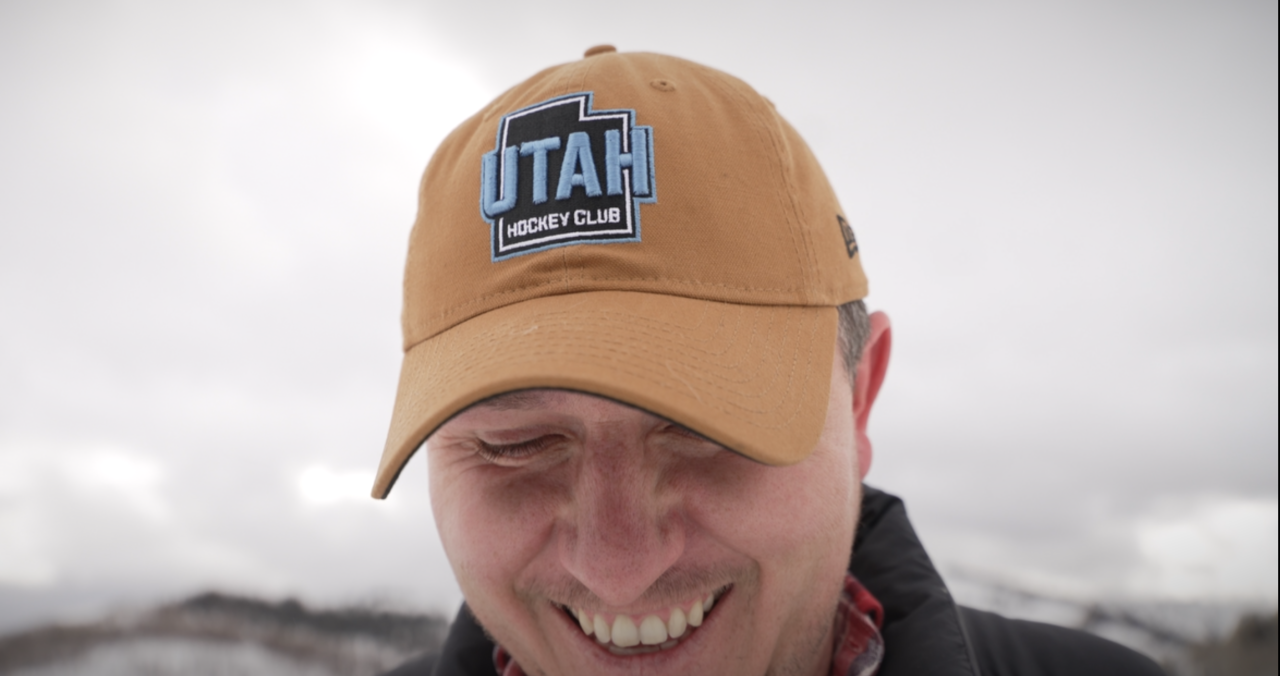PRICE, Utah — The finalists are down to three, The Outlaws, The Utah Hockey Club, and the Mammoth but the big question remains: what will the name be?
For many fans, the right answer is the Mammoth but what do Mammoths have to do with Utah? As it turns out, it fits pretty well!
To find out why we traveled to the USU Prehistoric Museum houses treasures from finds all across Utah, including dinosaurs and relics of past civilizations that showcase our history. However, the crowning jewel is the Huntington Mammoth.
THE HUNTINGTON MAMMOTH

According to Dr. Josh Lively, curator of paleontology at the USU Eastern Prehistoric Museum, “ It was found up Huntington Canyon in 1988 it was actually one of the most important mammoths known at that time and even still today.”
If you want to learn more about mammoths, Dr. Josh Lively is your go-to expert.
He explains that based on estimates derived from modern elephants, Columbian mammoths, much larger than both modern elephants and woolly mammoths, probably weighed about 10 tons.
The Columbian mammoth, which is much bigger than a woolly mammoth, has a significant connection to Utah. Dr. Lively notes that mammoth fossils have been discovered all over the state. However, the Huntington mammoth is particularly special.
“This was found at 9000 feet in elevation, much higher than any other mammoth previously.” He said, adding incredibly “It's not even really fossilized. So when you look at the actual bones of this mammoth, they're actually the same composition, for the most part, that they were when the animal was living.”
This exceptional preservation allowed scientists to extract DNA from the mammoth, which significantly advanced our understanding of these creatures.
In fact, it was the first Columbian Mammoth to have its genome sequenced.
The study revealed that Columbian Mammoths interbred with woolly mammoths, which is a completely separate species.
Interestingly, arrows and spears were also discovered at the same site, proving that the first Utahns interacted with these mammoths.
BEHIND THE SCENES

While the specimen in the museum is a cast, the real bones are located just across the street in their archives. Dr. Lively showed us around the area where not only the mammoth but also dinosaur bones are preserved items that the public does not usually get to see.
Among the collection, the mammoth bones truly stand apart.
Lively showed us the femur, the humerus, along with some vertebrae and pieces of the lower jaw of this particular mammoth.
And then we arrived at the highlight: the cranium, which is the main part of the skull of the Huntington mammoth.

The skull still holds a small piece of the tusk in its original position, which is incredibly rare, seeing as that ivory normally disintegrates before found.
Seeing the real thing in person is an unforgettable experience, especially knowing how ancient it is.
The carbon dating for this particular mammoth is approximately 13,000 years old, making it actually one of the youngest Mammoths ever found.
The bones also highlight a strange affectation this Mammoth had.
Lively showed us parts of the animal's vertebrae that were fused together remarking “that's not supposed to look like this.”
His students are conducting studies to look at the strange disease that this Mammoth had, and more about how this animal's life would have been towards the end of its life.
Estimates looking at the animal's teeth show that it was towards the end of its life as the teeth had been very worn down.
A FAMOUS SKELETON

With all the bones recovered, this specimen has not only rewritten much of what we knew about mammoths but is also largely complete.
This completeness has provided opportunities for those who create casts of mammoths, allowing them to replicate a single individual and produce those casts for other museums.
Several have been put in museums across the country but here in Utah the large skeletons at the Natural History Museum of Utah and the Fairview Museum of Arts and History are exact copies of the bones here at USU Eastern.
As a finale to my journey to learn more about mammoths in Utah, I followed Dr. Lively to the site where this mammoth was found at Huntington Reservoir.
Amazingly, they were working on the dam when a bulldozer operator struck the skull that is now part of their collections.
The operation commenced on 8/8/1988 and the process was painstaking to dry out the bones without cracking.
Now they are available for study for scientists who still today are using them to make discoveries.
HOCKEY

Of course, Dr. Lively expressed his personal preference saying as a paleontologist, he would love to see a Mammoth represent the hockey team.
The surprising thing is that there could be many more Utah Mammoths yet to be discovered.
Dr. Lively is certain that undiscovered mammoths, mastodons, short-faced bears, and numerous other Ice Age animals are likely still hidden in this area.
With Mammoths being a part of our history throughout the state, they might just make the perfect mascot.
“It is something that is Uniquely Utah” (I did not prompt him to say that by the way as this is a part of the FOX13 Series Uniquely Utah) adding “and Something that folks in our state should be really proud of.”
Coming up tomorrow, we will profile the other potential new name: The Outlaws and the history behind Utah’s Outlaw connections.








